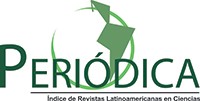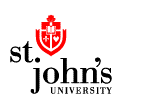STAGES, SEX RATIO AND CATCH SIZE OF HIPPOCAMPUS INGENS GIRARD, 1858 (SYNGNATHIFORMES: SYNGNATHIDAE) FROM A SAMPLE SEIZED IN PERU
DOI:
https://doi.org/10.24039/rtb20211921049Keywords:
adult, capture, population, seahorse, South-East PacificAbstract
322 individuals of Hippocampus ingens Girard, 1858 – the “Pacific Seahorse” -- were analyzed from a dehydrated sample from an illegal fishing seizure carried out in Tumbes, Piura and Lambayeque (northern region of Peru) in 2016. The values of capture size, sexual proportion and stages of development (juvenile or adult) were determined. The morphometric analysis consisted of determining the total height, body height, and length of the head while the identification of the sexes was based on morphological characters such as the presence of the incubation sac and light keels for males, and the dark spot under the anal fin in the case of adult females. Capture sizes (total height) ranged from 87 mm to 160 mm for adult individuals. No significant difference was found when comparing total height values in relation to the sex of individuals. The sex ratio (female: male) was 1.21:1. The results obtained update the status of a population of H. ingens in northern Peru and can serve as the basis for the development of conservation programs and future fisheries management of this species in Peru.
Downloads
References
Aguilar-Barojas, S. 2005. Fórmulas para el cálculo de la muestra en investigaciones de salud. Salud en Tabasco,11: 333-338.
Audzijonyte, A.; Kuparinen, A.; Gorton, R. & Fulton E.A. 2013. Ecological consequences of body size decline in harvested fish species: positive feedback loops in trophic interactions amplify human impact. Biology Letters, 9: 1-5.
Aylesworth, L.A.; Xavier, J.H.; Oliveira, T.P.; Tenorio, G.D.; Diniz, D.F. & Rosa, I.L. 2015. Regional-scale patterns of habitat preference for the seahorse Hippocampus reidi in the tropical estuarine environment. Aquatic Ecology, 49: 499–512.
Baum, J.K. & Vincent, A.C. 2005. Magnitude and inferred impacts of the seahorse trade in Latin America. Environmental Conservation, 32: 305–319.
Becerril-García, E.E.; Petatan-Ramirez, D.; Ortiz-Aguirre, I. & Ayala-Bocos, A. 2018. First record of the Pacific Seahorse Hippocampus ingens in Guadalupe Island, México. Journal of Fish Biology, 92: 1207-1210.
Bisso-Bustamante, F.L. 2006. Reproducción de Hippocampus ingens Girard, 1859 en cautiverio [Tesis de Licenciatura]. Universidad Nacional Federico Villarreal, Lima, Perú.
Chang, C.H.; Jiang-Liaw, N.H.; Lin, Y.S.; Fang, Y.C. & Shao, K.T. 2013. Authenticating the use of dried seahorses in the traditional Chinese medicine market in Taiwan using molecular forensics. Journal of Food and Drug Analysis, 21: 310–316.
Choi, Y.U.; Rho, S. & Park, D.H. 2012. Population characteristics of two seahorses, Hippocampus coronatus and Hippocampus mohnikei, around seagrass beds in the southern coastal waters of Korea. Ichthyological Research, 59: 235–241.
Da Costa-Castro, A.L.; De Farias-Diniz, A.; Zaparolli-Martinis, A.; Vendel, A.L.; Ribeiro de Oliveira, T.P. & De Lucena Rosa, I.M. 2008. Assessing diet composition of seahorses in the wild using a non-destructive method: Hippocampus reidi (Teleostei: Syngnathidae) as a study-case. Neotropical Ichthyology, 6: 637-644.
Dzyuba, B.; Van Look, K.J.; Cliffe, A.; Koldewey, H.J. & Holt, W.V. 2006. Effect of parental age and associated size on fecundity, growth and survival in the yellow seahorse Hippocampus kuda. The Journal of Experimental Biology, 209: 3055–3061.
Encomendero, E.L. 2009. Porqué investigar el caballito de mar, Hippocampus ingens, Girard, 1859?. Pueblo Continente, 20: 393–397.
Escobedo-Galván, A. 2008. Estructura poblacional y proporción de sexos en Caiman crocodilus en Caño Negro, Costa Rica. Iheringia. Série Zoologia, 98: 489–492.
Faleiro, F.; Narciso, L. & Vicente, L. 2008. Seahorse behaviour and aquaculture: How to improve Hippocampus guttulatus husbandry and reproduction? Aquaculture, 282: 33-40.
Foster, S. 2004. Case study: Hippocampus spp. Project Seahorse. University of British Columbia, Canada.
Freret-Meurer, N.V.; Andreata, J.V. & Alves, M.A. 2013. Seahorse fingerprints: a new individual identification technique. Environmental Biology of Fishes, 96: 1399-1405.
García-García, J.A.; Rending-Bernal, A. & López-Alvarenga, J. C. 2013. Cálculo del tamaño de la muestra en investigación en educación médica. Investigación en Educación Médica, 2: 217-224.
Groves, J. S. & Lavenberg, R. J. 1997. The Fishes of the Galapagos Islands. Stanford University Press, Stanford, USA.
Kvarnemo, C.; Jones, A.G.; Moore, G.I.; Hensman, W. & Avise, J.C. 2007. Monogamous pair bonds and mate switching in the Western Australian seahorse Hippocampus subelongatus. Journal of Evolutionary Biology, 13: 882–888.
Lourie, S.A.; Vincent, A.C. & Hall, H.J. 1999. Seahorses – An Iddentification Guide to the World's Species and their Conservation. Project Seahorse, London, UK.
Lourie, S.A.; Foster, S.J.; Cooper, E.W. & Vincent, A.C. 2004. A Guide to the Identification of Seahorses. Project Seahorse and TRAFFIC North America. Washington D.C. University of British Columbia and World Wildlife Fund.
Lourie, S.A.; Pollom, R.A.; & Foster, S.J. 2016. A global revision of the Seahorses Hippocampus Rafinesque 1810 (Actinopterygii: Syngnathiformes): Taxonomy and biogeography with recommendations for further research. Zootaxa, 4146: 001-066.
Mai, A.C. & Rosa, I.M. 2009. Aspectos ecológicos do cavalo-marinho Hippocampus reidi no estuário Camurupim/Cardoso, Piauí, Brasil, fornecendo subsídios para acriação de uma Área de Proteção Integral . Biota Neotropica, 9: 85-91.
Mones, J. 2011. Evaluación del copépodo Pseudodiaptomus euryhalinus como alimento vivo en juveniles de caballito de mar Hippocampus ingens. Centro de investigación en Alimentación y Desarrollo. M. C. Centro de Investigación en Alimento y Desarrollo, Mazatlán, Sinaloa, México.
Oceana. 2019. El enigmático y amenazado mundo de los caballitos de mar. Consultado el 7 de octubre del 2020. https://europe.oceana.org/es/eu/prensa-e-informes/reportajes/caballitos-de-mar
Pastor, L.; Piloto, Y.; Corrada, R. & Chevalier, P. 2011. Study of the seahhorse populations in two zones of the North Coast of Havana and Pinar Del Rio, Cuba. Journal of Marine and Coastal Sciences, 3: 171-181.
Perante, N.C.; Pajaro, M.G.; Meeuwig, J.J. & Vincent, A.C. 2002. Biology of a seahorse species, Hippocampus comes in the central Philippines. Journal of Fish Biology, 60: 821–837.
Piacentino, G. & Luzzatto, D. 2004. Hippocampus patagonicus sp. nov., nuevo caballito de mar para la Argentina (Pisces, Syngnathiformes). Revista del Museo Argentino de Ciencias Naturales, n.s., 6: 339-349.
Pollom, R. 2017. Hippocampus ingens. La Lista Roja de Especies Amenazadas de la UICN 2017: e.T10072A54905720. Doi: 10.2305/IUCN.UK.2017-3.RLTS.T10072A54905720.en.
PRODUCE. 2004. Resolución Ministerial N° 306-2004. Por el cual se prohíbe la extracción del recurso caballito de mar o hipocampo en aguas marinas de jurisdicción peruana. http://extwprlegs1.fao.org/
Quiñe, M. & Romero, M. 2007. Estudio Bioecologico y Pesquero –Comercial de Hippocampus ingens "caballito de mar” en el litoral del Perú (Tumbes y Piura) con fines de Conservación. Instituto del Mar del Perú. Dirección de investigaciones de recursos Demersales y litorales. Unidad de investigaciones en biodiversidad informe Anual 2007.
Rojas, D.A. & Aguilar, C.A. 2004. Composición del tubo digestivo de juveniles del Caballito del Pacífico Hippocampus ingens (Girard, 1858). Universidad Autónoma de Baja California Sur.
Rosa, I.L.; Oliveira, T.P.; Castro, A.L.; De Souza, L.E.; Xavier, J.H.; Nottingham, M.C.; Dias,
T.L.; Bruto, L.V. & Monteiro, C. 2007. Population characteristics, space use and habitat associations of the seahorse Hippocampus reidi (Teleostei: Syngnathidae). Neotropical Ichthyology, 5: 405-414.
Salin, K.R. 2003. Reproductive biology and larval rearing of Hippocampus kuda, and the taxonomy of seahorses (Hippocampus spp.) along the southern coast of India. Ph.D. Central Institute of Fisheries Education, Versova, Mumbai.
Sanders, J.G.; Cribbs, J.E.; Fienberg, H.G; Hulburd, G.C.; Katz, L.S. & Palumbi, S.R. 2008. The tip of the tail: molecular identification of seahorses for sale in apothecary shops and curio stores in California. Conservation Genetics, 9: 65-71.
Southeast Asian Fisheries Development Center. 1999. AQD's marine ornamental fish project. SEAFDEC Asian Aquaculture, 21: 31-38.
Vite-García, N.; López-Jiménez, S. & Rangel-López, L. 2017. Avances en el cultivo de Hippocampus spp. (Teleostei: Syngnathidae): investigaciones en el siglo XXI. Latin American Journal of Aquatic Research, 45: 1-17.
Zhang, H.; Zhang, Y. & Lin, Q. 2014. Complete mitochondrial genome of the pacific seahorse Hippocampus ingens Girard, 1858 (Gasterosteiformes: Syngnathidae). Mitochondrial DNA, 26: 755–756.
Published
How to Cite
Issue
Section
License
Copyright (c) 2021 The Biologist

This work is licensed under a Creative Commons Attribution-NonCommercial-NoDerivatives 4.0 International License.
Objeto: El AUTOR-CEDENTE transfiere de manera TOTAL Y SIN LIMITACIÓN alguna al CESIONARIO (Revista The Biologist (Lima)) los derechos patrimoniales que le corresponden sobre sus obras por el tiempo que establezca la ley internacional. En virtud de lo anterior, se entiende que el CESIONARIO adquiere el derecho de reproducción en todas sus modalidades, incluso para inclusión audiovisual; el derecho de transformación o adaptación, comunicación pública, traducción, distribución y, en general, cualquier tipo de explotación que de las obras se pueda realizar por cualquier medio conocido o por conocer en el territorio nacional o internacional.
Remuneración: La cesión de los derechos patrimoniales de autor que mediante este contrato se hace será a título gratuito.
Condiciones y legitimidad de los derechos: El AUTOR-CEDENTE garantiza que es propietario integral de los derechos de explotación de la(s) obra(s) y en consecuencia garantiza que puede contratar y transferir los derechos aquí cedidos sin ningún tipo de limitación por no tener ningún tipo de gravamen, limitación o disposición. En todo caso, responderá por cualquier reclamo que en materia de derecho de autor se pueda presentar, exonerando de cualquier responsabilidad al CESIONARIO.
Licencia de acceso abierto: El AUTOR-CEDENTE autoriza que manuscrito publicado en la Revista Científica The Biologist (Lima) (versión Impresa ISSN 1816-0719, versión en línea ISSN 1994-9073) permanece disponible para su consulta pública en el sitio web http://revistas.unfv.edu.pe/index.php/rtb/index y en los diferentes sistemas de indexación y bases de datos en las que la revista tiene visibilidad, bajo la licencia Creative Commons, en la modalidad Reconocimiento-No comercial- Sin Trabajos derivados –aprobada en Perú, y por lo tanto son de acceso abierto. De ahí que los autores dan, sin derecho a retribución económica, a la Escuela Profesional de Biología, Facultad de Ciencias Naturales y Matemática de la Universidad Nacional Federico Villarreal (EPB - FCCNM - UNFV), los derechos de autor para la edición y reproducción a través de diferentes medios de difusión.









































